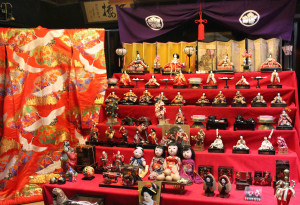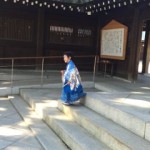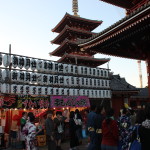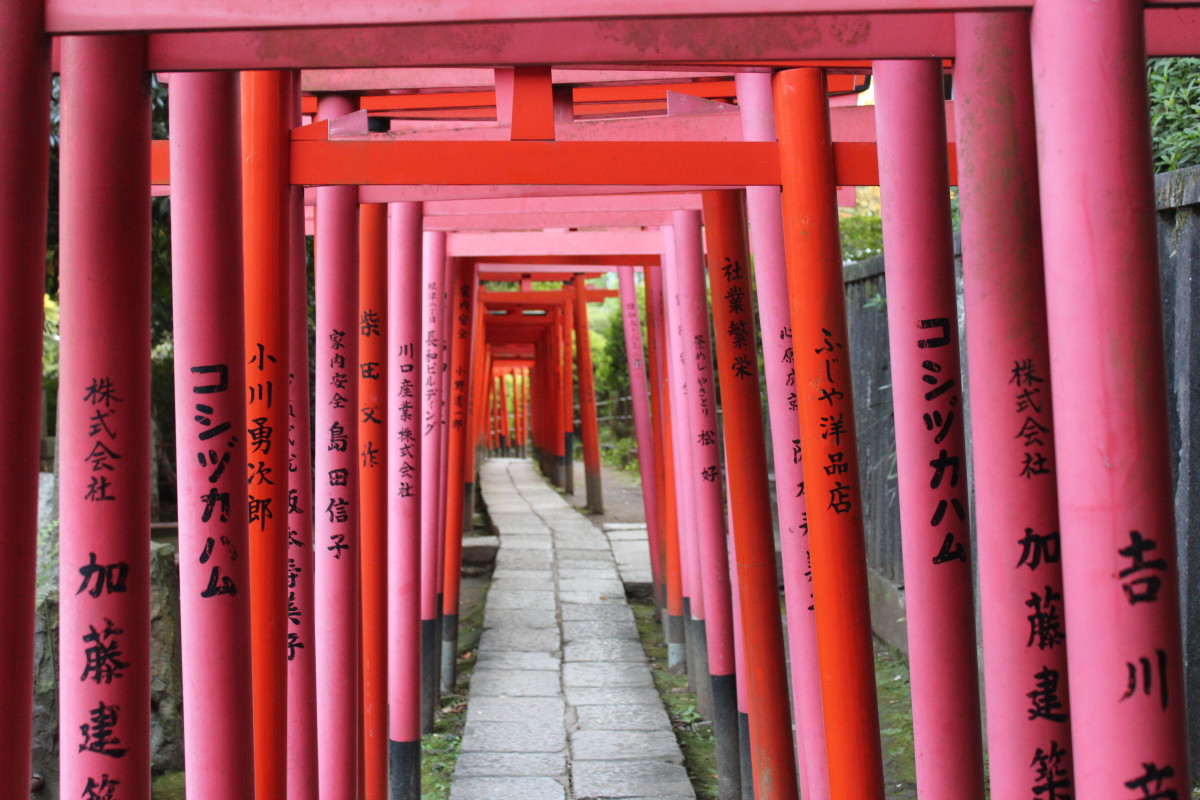So far, we have seen some visual and historical differences between Shinto and Buddhism. Now let me explain how naturally both Shinto and Buddhism affect on our daily lives and seasonal ceremonies.
At the night of New Year’s Eve, December 31, we usually go to temple to appreciate the lucks of previous year and worship for coming good year. Next morning, on January 1, we go to shrine wishing for a good new year. You may feel this is something very unprincipled. But this is the way Japanese have been. Other religious ceremonies both from Shinto and Buddhism can be observed every season. March 3 is girls’ day, which families with girls display a set of special dolls called ohina-sama at their home and wish for happy healthy life for their daughters. This ceremony derives from the habit of nobilities 1000 years ago and related with Shinto. May 5 is Children’s day and families with boys display a set of carps in their gardens or balconies. The first origin of this event can date back to ancient China but was mixed with Japanese tradition and established the way see today around 250 years ago. In July, we have tanabata event which we enjoy watching milky way in the sky. This is also originally from ancient China and was mixed with native tradition. Middle of August has one of the most important family event that all members gather and pray for ancestors. This 3 days ceremony is called bon and everyone get holiday to go back home town to join family gathering. This is tightly related with Buddhism (the one different from Indian one; but similar habit can be observed in China and Korea). In early November, families with children age 3, 5 and 7 go to shrine usually wearing kimono, to worship the healthier and happy future for children. This tradition is called shichi-go-san, literally means 753.
In addition, western celebrations such as Valentine’s Day, Halloween and Christmas are also part of our seasonal events, though those western ones are less religious and people just enjoy partying.
Became interested in Japanese culture? koi Travel offers you unique cultural experiences!




